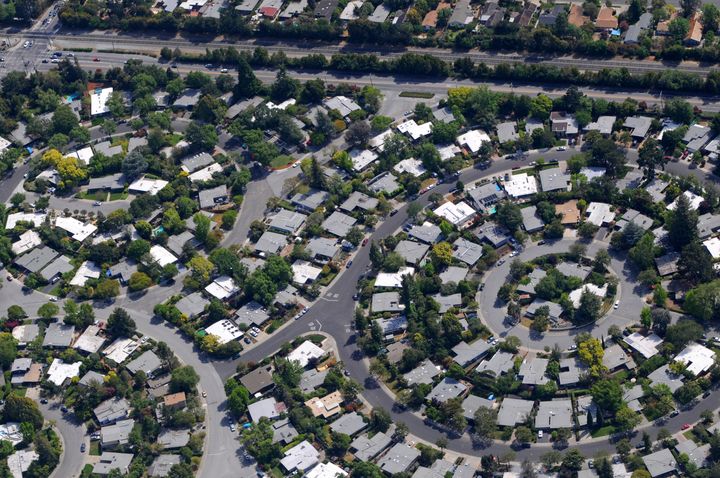
This is how bad the housing crisis has gotten in Silicon Valley: A lawyer who lives in Palo Alto, California, and advises the city on housing can no longer afford to live there.
Citing Palo Alto’s “astronomical” housing costs, attorney Kate Downing explained in a public letter this week why she’s resigning from her position on the city’s Planning and Transportation Commission. Downing, who works for a tech company, has been fighting for affordable housing as a founding member of the citizens group Palo Alto Forward. She says that she and her husband, a software engineer, rent a home with another couple for $6,200 a month but are now moving to Santa Cruz.
“It’s clear that if professionals like me cannot raise a family here, then all of our teachers, first responders, and service workers are in dire straits,” Downing wrote in the letter, which was addressed to city council members and residents. “We already see openings at our police department that we can’t fill and numerous teacher contracts that we can’t renew because the cost of housing is astronomical not just in Palo Alto but many miles in each direction.”
“We should take care to remember that Palo Alto is famous the world over for its residents’ accomplishments, but none of those people would be able to live in Palo Alto were they starting out today.”
- Lawyer and affordable housing advocate Kate Downing
The Silicon Valley tech boom has brought jobs and economic success to the region, but the housing stock hasn’t kept pace with the influx of new workers. The scarcity of available homes is driving up prices and pushing out low- and middle-income residents, including public servants with jobs that are essential for cities to function.
Less than 10 percent of Palo Alto’s city employees actually live there, according to Slate. To escape high rents, many workers live in more affordable communities and have long commutes. Palo Alto Fire Captain Sean MacDonald leaves his home in Sacramento at 4 a.m., driving 147 miles to get to work by 8 a.m. He told Peninsula Press that was just the price you pay to work and raise a family in the Bay Area.
The median rent for a two-bedroom apartment in Palo Alto was $4,500 last month, according to the real estate site Trulia. The median home price was $2.4 million.
Palo Alto borders Stanford University and is home to plenty of residents who’ve made fortunes in the tech industry. Yet the city is making some strides to address the housing crisis, recently committing $14.5 million to preserve a mobile home park that owners wanted to close. Earlier this year, officials began looking into different ways to expand affordable housing.
Still, Downing takes issue with the city’s overall approach:
Council has ignored the majority of residents and has charted a course for the next 15 years of this city’s development which substantially continues the same job-housing imbalance this community has been suffering from for some time now: more offices, a nominal amount of housing which the Council is already laying the groundwork to tax out of existence, lip service to preserving retail that simply has no reason to keep serving the average Joe when the city is only affordable to Joe Millionaires.
In her letter, Downing repeated her past suggestions to boost the housing supply, like enforcing minimum density requirements for developers, legalizing duplexes and easing some restrictions that limit where residences can be built.
She envisions a bleak future for Palo Alto if sky-high housing costs continue:
I struggle to think what Palo Alto will become and what it will represent when young families have no hope of ever putting down roots here, and meanwhile the community is engulfed with middle-aged jet-setting executives and investors who are hardly the sort to be personally volunteering for neighborhood block parties, earthquake preparedness responsibilities, or neighborhood watch. If things keep going as they are, yes, Palo Alto’s streets will look just as they did decades ago, but its inhabitants, spirit, and sense of community will be unrecognizable. A once thriving city will turn into a hollowed out museum. We should take care to remember that Palo Alto is famous the world over for its residents’ accomplishments, but none of those people would be able to live in Palo Alto were they starting out today.
Read Downing’s entire resignation letter on NewCo Shift.
_____
Related stories:
- Here’s Why It Feels Like Rent Is Eating Up Your Entire Paycheck
- The Only Way Millennials Can Afford To Live In Big Cities
- Homeownership In The U.S. Has Plummeted, But Not By Choice
- Here’s How Much Money You Need To Afford Rent In Every State
- Million-Dollar Homes Are Taking Over These U.S. Cities At An Alarming Pace
- How Sky-High Rents Are Radically Changing New York’s Neighborhoods
- The Cities Where A Six-Figure Income Is Barely Enough To Get By
- How The Eviction Epidemic Is Trapping Black Women In Poverty
- Renters Are Mostly Screwed, But Here’s One City That’s Actually Affordable

